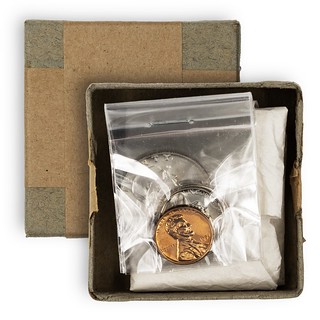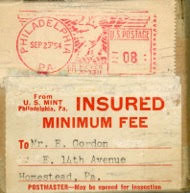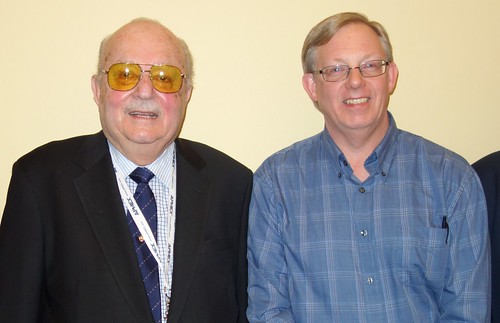
PREV ARTICLE
NEXT ARTICLE
FULL ISSUE
PREV FULL ISSUE
MORE ON 1950-1951 PROOF SET PACKAGINGLast week Randy Phelps asked about 1950-1951 Proof Set packaging. He followed up with two items found on the internet; one was in an earlier E-Sylum article, and both originate with Harvey Stack. Here they are. -Editor
"The 1950 Proof sets had a single tape strip, and the 1951 had two double criss-crossed strips of tape. Neither box was dated, and only in 1952 did the Mint finally identify the boxes by stamping the date on them. By 1953 the Mint sealed the sets in dated envelopes."
"The introduction of boxing in 1950 caused some buyers to reject sets that came directly from the boxes of issue, if they were opened. As each box was about 3 x 3 inches in size, the Mint used packing tape to seal each set. The coins were packed in cellophane envelopes, wrapped in tissue to further protect them in shipment, were sent out in the boxes, and were kept by receivers usually in the sealed box." "1950 and 1951 Proof sets had NO MARKINGS ON THE BOX so one could not be sure what was in the box if still sealed. The BOXED sets of 1952 where STAMPED with the date. and later that year [were] shipped in manila envelopes, marked with the date, and coins were Flat Packed in celophane within." "So the 1950 and 1951 sets, especially to a neophyte were hard to tell WHAT WAS IN THE BOX ? Professional dealers like STACK'S quickly learned that the 1950 sets had a single packing taping around the box. and the 1951 sets had a 2 row crossed taping about the box. So when presented with fresh unopened boxes we knew what we could find inside." Harvey's submission was comical, describing how customers had convinced themselves that the sealed boxes should never be opened -Editor
Hearing this I or any of our other [salesmen] would reply, "how do you know what is in the box ? how can you be sure what you are getting ? Maybe there is nothing in the box, or it is filled with sink washers, or just dirty old coins?" The client would shout back, " I read and heard the value was in the sealed box, and if you cannot get one like I asked for, I will leave the store !" So to please the client, who was so uninformed that we took another SEALED BOX out of the [drawer] and gently handed it to so it would not "drop on the counter" and again lose its value because the box could have been dented(?) and made the sale. Harvey's comments may be the source of the one vs two strips of tape issue, although we haven't been able to independently confirm that. But his story is priceless, and does confirm the confusion before the Mint began stamping dates on the otherwise mystery packages. Harvey was a one-of-a-kind hobby fixture, and we miss him. Just this week I came across this March 2014 photo of us, taken at a Baltimore Whitman Expo by another hobby icon, Dave Bowers. That nine-year-old shirt is still with us - I wore it to work one day this week. Guess I got my money's worth. -Editor Tony Terranova writes: "If you look closely at your images you will see staple holes. The boxed proof sets were sent from the mint with the individual bags stapled. Any taping was done by individuals after they received their sets. This was done to keep the coins safe from the rust that eventually formed on the staples."
To read the complete article, see:
To read the earlier E-Sylum articles, see:
Wayne Homren, Editor The Numismatic Bibliomania Society is a non-profit organization promoting numismatic literature. See our web site at coinbooks.org. To submit items for publication in The E-Sylum, write to the Editor at this address: whomren@gmail.com To subscribe go to: https://my.binhost.com/lists/listinfo/esylum All Rights Reserved. NBS Home Page Contact the NBS webmaster 
|



